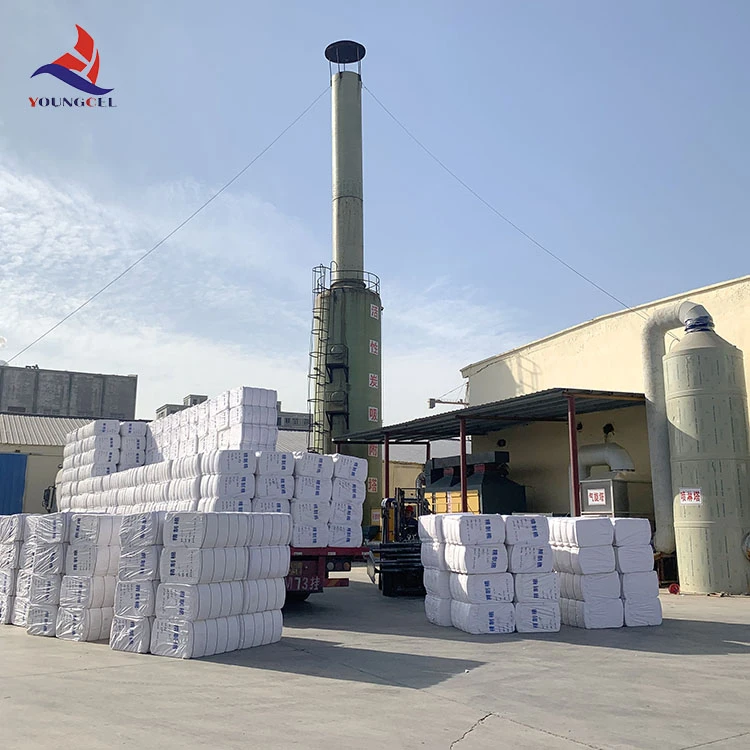The Versatility of Cellulose Exploring the Polymer's Applications and Benefits
Cellulose, a naturally occurring polymer found in the cell walls of plants, is the most abundant organic polymer on Earth. Composed of linear chains of glucose units linked by β-1,4-glycosidic bonds, cellulose plays a critical role in the structural integrity of plants, providing them with rigidity and strength. Its remarkable properties make cellulose not only vital in the biological world but also invaluable in various industrial applications. This article delves into the significance of cellulose as a polymer, exploring its unique features, applications, and the benefits it brings to various sectors.
One of cellulose's most significant properties is its biodegradability. As an organic compound, cellulose can be broken down by microorganisms, making it an environmentally friendly alternative to synthetic polymers. In a world increasingly concerned about plastic pollution and sustainability, the natural biodegradability of cellulose positions it as a preferred material for numerous applications. For instance, in the packaging industry, cellulose-based materials can replace traditional plastics, providing an eco-friendlier option without compromising performance.
The Versatility of Cellulose Exploring the Polymer's Applications and Benefits
In addition to textiles, cellulose is a vital component in the production of paper and cardboard. The pulp and paper industry relies heavily on cellulose for its products, using wood chips and other plant materials as a primary source. The processing of cellulose to produce paper has been refined over centuries, leading to various grades and types suited for different applications, from everyday printing paper to specialty papers for art and packaging.
cellulose polymer

Beyond its traditional applications, cellulose has emerged as a critical player in the realm of bioengineering and pharmaceuticals. Cellulose nanofibers, derived from the breakdown of cellulose, have gained interest for their high strength-to-weight ratio and biocompatibility. These nanofibers can be used in the development of drug delivery systems, wound dressings, and scaffolds for tissue engineering. The inherent properties of cellulose, combined with its biocompatibility, present exciting possibilities for advancing medical technologies.
Furthermore, cellulose derivatives, such as carboxymethyl cellulose (CMC) and hydroxypropyl methylcellulose (HPMC), have found extensive use in food and cosmetics. CMC acts as a thickening and stabilizing agent in various food products, while HPMC is commonly utilized in personal care items for its emulsifying and film-forming properties. The versatility of cellulose derivatives highlights the polymer's adaptability to meet the requirements of various industries.
The renewable nature of cellulose also contributes to its appeal in an era prioritizing sustainability. Sourced primarily from plants, cellulose can be produced in abundance and replenished through sustainable agricultural practices. By utilizing cellulose-based materials, industries can reduce their dependency on fossil fuels, minimizing their environmental footprint.
In conclusion, cellulose is an extraordinary polymer with a myriad of applications and benefits. From its role in traditional industries such as textiles and paper to its innovative uses in biomedicine and sustainable packaging, cellulose's versatility is undeniable. As the world continues to seek sustainable solutions to environmental challenges, cellulose stands out as a promising material that aligns with these goals. As research advances and technologies evolve, the potential of cellulose as a vital polymer will likely expand, offering new avenues for sustainable development and innovation across various sectors. By harnessing the power of this abundant natural resource, industries can move toward a more sustainable future, demonstrating that tradition and innovation can coexist harmoniously.
-
Rdp Powder: Key Considerations for Wholesalers in the Building Materials IndustryNewsJul.08,2025
-
Key Considerations for Wholesalers: Navigating the World of Hpmc - Based ProductsNewsJul.08,2025
-
Hpmc Detergent: Key Considerations for WholesalersNewsJul.08,2025
-
Key Considerations for Wholesalers: China Hpmc For Tile Adhesive, Coating Additives, Concrete Additives, and MoreNewsJul.08,2025
-
Crucial Considerations for Wholesalers: Navigating the World of Construction MaterialsNewsJul.08,2025
-
Key Considerations for Wholesalers Sourcing Additive For Cement, Additive For Concrete, Additive For Putty from Additive Manufacturer Shijiazhuang Gaocheng District Yongfeng Cellulose Co., Ltd.NewsJul.08,2025




